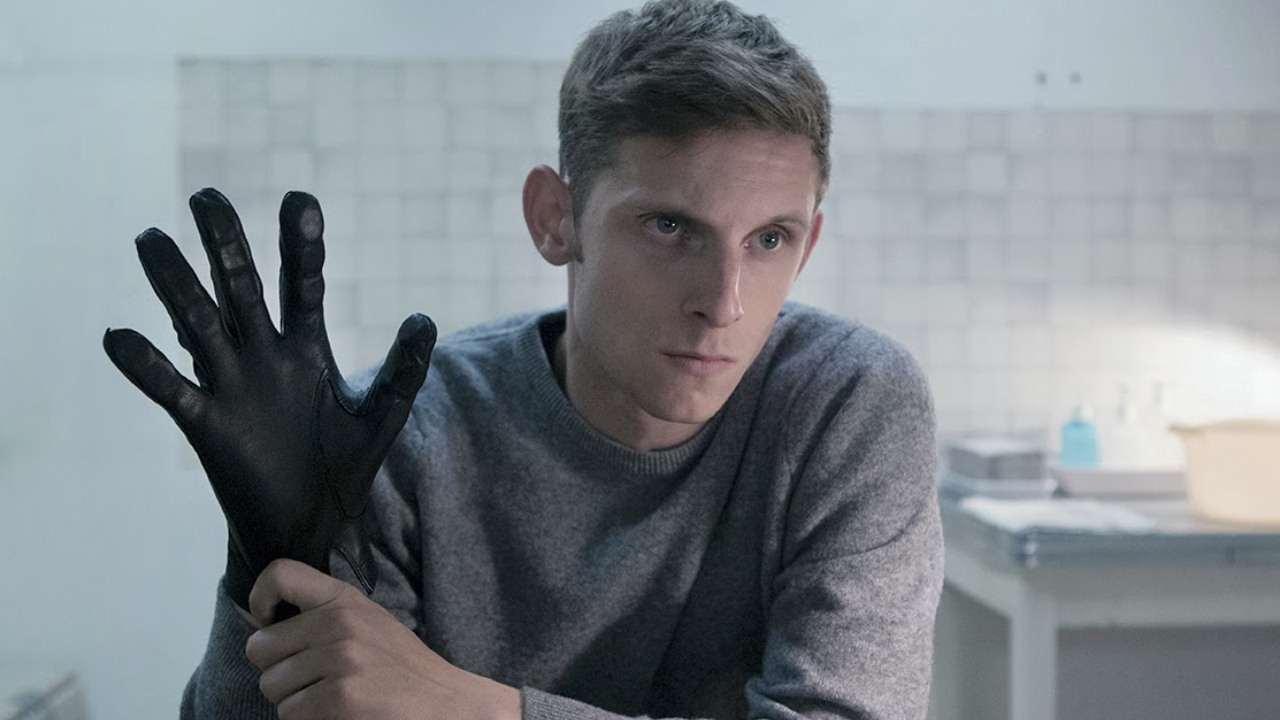
Confrontational provocateur Lars von Trier has, over a prolific filmmaking career now bridging nearly four decades, amassed an admirable, distinct, powerful, and frequently polarizing body of work. The Danish born firebrand is recognized, even by his detractors, for his numerous technical innovations, his willingness to experiment, and his fondness for upending genre conventions.
Von Trier is also identified with his often adversarial approach to studying and scrutinizing themes of existentialism, sociopolitical issues, mental health intellection, as well as spirituality and faith traditions. Because of his often bold and spurring modus operandi, von Trier courts controversy with almost every new film he actualizes.
As an auteur-director, von Trier has inspired many of his peers via his financial independence and total creative control over his many projects, all made through his production company Zentropa Entertainment, which he founded in 1992 with producer Peter Aalbæk Jensen.
A key architect along with fellow Danish filmmakers Thomas Vinterberg––and to a lesser but still considerable extent Søren Kragh-Jacobsen and Kristian Levring––they concocted the cinematic movement called Dogme 95. This internationally acknowledged movement involved the “Dogme 95 Manifesto” and the “Vows of Chastity” were meant to emphasize traditional storytelling devices while eschewing elaborate special effects or technology, and is still practiced by filmmakers to this day, though von Trier himself has largely left it behind since the 90s.
Apart from his often brutal and burning approach to controversial subject matter, von Trier’s films consistently present strong female leads, and his female-centric films are often compared to other great European filmmakers like Michelangelo Antonioni and Ingmar Bergman for this very reason. “The male protagonists in my films are basically all idiots who don’t understand shit,” says von Trier, adding: “Whereas the women are much more human, and much more real. It’s the women I identify with in all my films.”
Among his many accolades, von Trier has received the Palme d’Or (for Dancer in the Dark), the Grand Prix (for Breaking the Waves), the Prix du Jury (for Europa), and the Technical Grand Prize (for The Element of Crime and Europa) at the Cannes Film Festival. And all of this from Cannes despite his being briefly banned and labelled “persona non grata” after a 2011 press conference promoting Melancholia got out of hand.
One final note before getting to the ranking of von Trier’s filmography is that the only notable omissions here are his 1988 telefilm Medea, and that of the Danish TV miniseries The Kingdom (1994) and The Kingdom II (1997), as they were never widely released cinematically, though it does slot in spectacularly as some of his most enjoyable and from out-of-left-field work. If you’re a fan of von Trier, Kingdom is essential viewing (but so is everything on this following list).
14. The Element of Crime (1984)
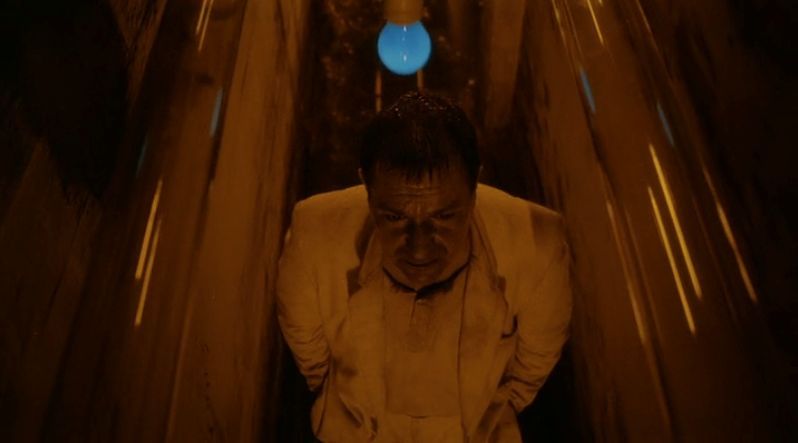
Von Trier’s pastiche-heavy neo-noir crime caper/art film, the first installment of his Europa trilogy, also runs as something akin to Alphaville-lite. But that said, it’s an artful, accomplished, and rather auspicious debut that concerns an ex-detective and expat named Fisher (Michael Elphick), down and out in Cairo when he reluctantly agree to take one last case involving a serial killer dubbed the “Lotto Murderer.”
After the at large killer keeps claiming the lives of several young girls, a frustrated Fisher enlists the help of a writer named Osbourne (Esmond Knight) and the pair explore some strange criminology methods to catch their man.
Of course, this being a von Trier film, things get stranger and more complex than this undernourished synopsis suggests and the only thing that really mars this production is that Element of the Crime was made on a small budget and some of that shows through. Still, the sepia-tones and surreal imagery make this first flight an interesting, and occasionally abstract, thriller.
13. Epidemic (1987)
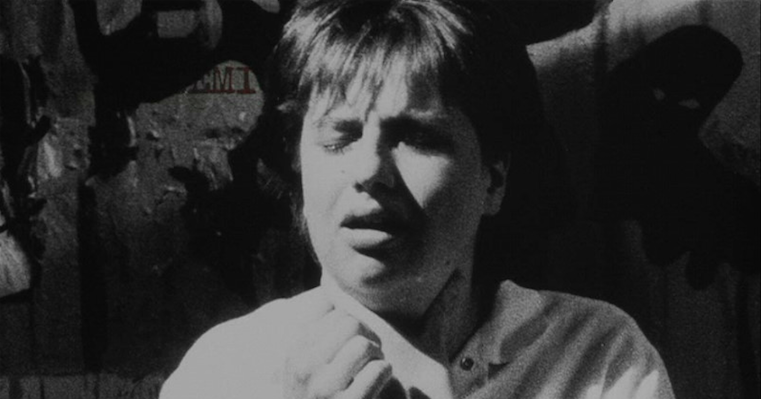
Continuing the Europa trilogy with Epidemic, von Trier also takes a rare turn in front of the camera as well where he is joined by co-screenwriter and co-star Niels Vørse in this eerie meta-horror film. Portraying simulacrum versions of themselves, the film features a frustrated director (von Trier) and a struggling screenwriter (Vørse) as they spend 18 months trying to concoct a suitable and bankable horror movie.
Intercut with scenes and sequences from the movie they’re writing, wherein von Trier is a rather dissident Dr. Memer trying to manufacture a cure for the titular epidemic. As Epidemic progresses things get more and ore sinister, strange, and ultimately horrific––the capsheaf is particularly cruelly rewarding––and the film is also fascinating in that all of the director’s cinematic obsessions are proleptically displayed.
Epidemic is also of interest to von Trier’s fans as it represents the first of many collaborations with the iconic cult and character actor Udo Kier.
12. Manderlay (2005)
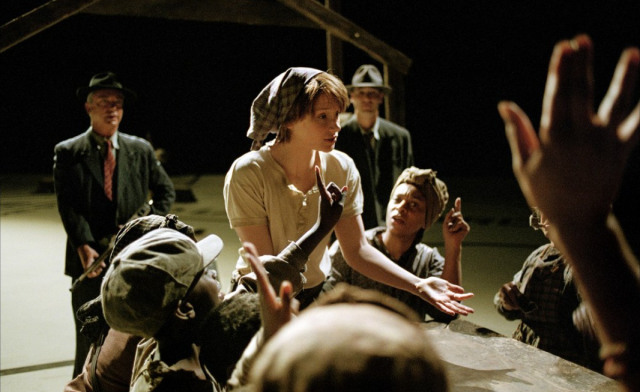
A not entirely successful, but still rather accomplished avant-garde experiment, this follow-up to 2003’s superior dissection Dogville, is the second film in von Trier’s thus far incomplete USA – Land of Opportunities trilogy.
Manderlay stars Bryce Dallas Howard, who replaces Nicole Kidman in the role of Grace Mulligan, a young woman in the Dust Bowl era of Arkansas in 1933. Grace and her father (Willem DaFoe) discover the eponymous plantation where it seems that slavery is still in practice.
Feeling compelled to help the people living in Manderlay Grace opts to stay and liberate these people and see them through their first harvest. Grace’s father, a gangster, leaves her with a quartet of his gunmen and his lawyer, Joseph (Teddy Kempner), all to ensure that the ex-slaves transition as swiftly and easily as possible.
Allegorical, provocative, and spiked with anti-American sentiment, Manderlay is nevertheless a moving, and emotional R and D of race relations, arrogance, and the articles of faith. As with Dogville, this film is shot in the same distinctive style––inspired by televised theater circa 1970s––on a bare soundstage with minimal sets (buildings are denoted by lines on the floor, with nominal to no set decoration).
The results will grate on some viewers who will only see pretension in these designs, but for the rest of us, buoyed by strong performances and devilish plot twists, this is a solid film and one whose ambition and basis is both sincere and enticing.
11. Europa (1991)
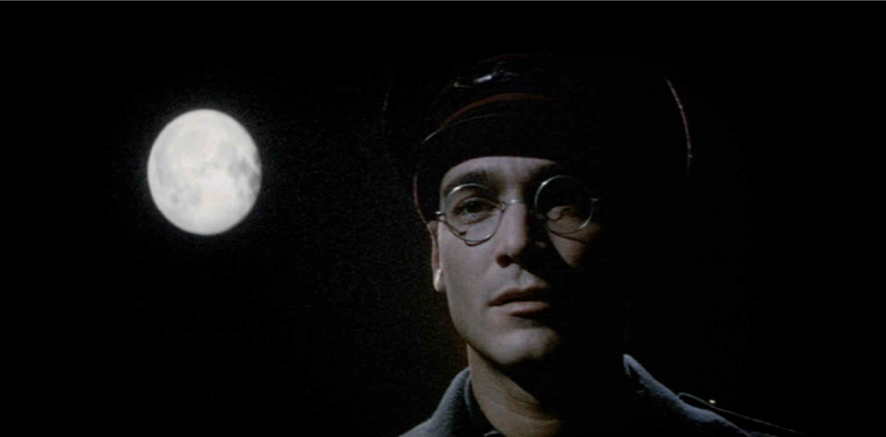
The very presence of actor Eddie Constantine in Europa invokes his iconic role of Lemmy Caution from Jean-Luc Godard’s 1965 sci-fi classic Alphaville, and it’s no coincidence. But Alphaville, in von Trier’s imaginings here, sits alongside Ed Wood’s Plan 9 from Outer Space (1959), and they make for oddly in sync bedfellows.
Concluding his punchy and pastiche-addled Europa trilogy, this Franz Kafka-excited closer––whose very name is an homage to Kafka’s posthumously published 1946 tome “Amerika”––is a cajoling fever dream of sound and image.
Filmed in a very experimental style with no less than three skilled cinematographers at von Trier’s beck and call (Henning Bendtsen, Edward Klosinski, and Jean-Paul Meurisse, respectively), each doing their best of imitate film noir convention in a mostly monochrome world of black-and-white with startling splashes of color imagery, rear-projection, as well as animated use of surreal layered imagery and double-exposures, all of which largely enhanced by Max von Sydow’s succinct narration.
Europa is set in 1945 US-occupied Germany, and concerns itself with a young and rather naive peacenik American named Leopold Kessler (Jean-Marc Barr), who is soon entwined in an intentionally maudlin plot to blow up a train belonging to Zentropa railways, all for the woman he loves, the fiery femme fatale Katharina Hartmann (Barbara Sukowa).
Spellbinding, and strange, Europa imagines a strangely futuristic past with no shortage of odd-lot slapstick and endless pop culture posturing. To miss Europa wouldn’t be wise.
10. The Boss of It All (2006)
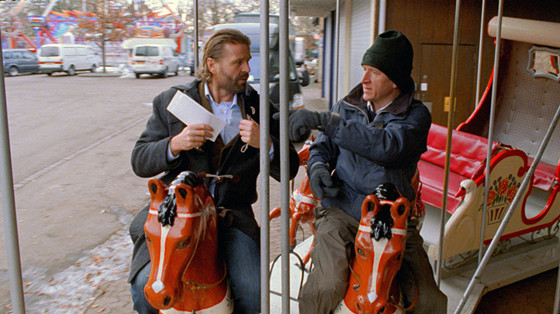
While even von Trier’s most dirge-like films offer moments of comical interlude, 2006’s The Boss of It All is the only film thus far in his canon that’s an across-the-board comedy, though of course of the pitch dark and satiric variety.
Perverse, droll, and especially serrated, this sharp workplace-set comedy involves Ravn (Peter Gantzler), company director for a successful IT firm who has spent years convincing his competent and good-humored staff that the real “boss of it all” is an absentee overseer named Svend who lives in America.
When the opportunity to sell the business presents itself via one wealthy prospective purchaser named Finnur (Fridrik Thór Fridriksson), Ravn realizes he has no choice but to hire an actor named Kristoffer (Jens Albinus) to play the fictional boss so that the deal can occur. Hilarity ensues, of course.
Fond of throwing in a gimmick or a technical challenge with many of his films, The Boss of It All is no exception, and for this project von Trier surrenders a significant part of his control as auteur but shooting the entire film WITHOUT A CAMERA OPERATOR. I didn’t mean to shout there, but this risky gambol on von Trier’s part deserved some sort of emphasis as it’s a rather ridiculous hindrance that here seems to work impeccably.
Essentially, this operator-free exercise worked like this: after blocking the scene with the cast von Trier would chose the best possible fixed camera position for coverage––as any director would do––and then a computer running the camera would choose when to tilt, pan or zoom at random.
The results? Well, many serendipitous instances resulted in what von Trier playfully referred to as “Automavision”, and the punchy and sharp editing from Molly Malene Stensgaard helps bring the whimsical wisecracking and vagary to the fore.
A funny experiment with plenty of pay off, The Boss of It All is probably von Trier’s most overlooked and underrated film and that’s a shame as it’s an absolute pleasure from start to finish.
9. The Idiots (1998)
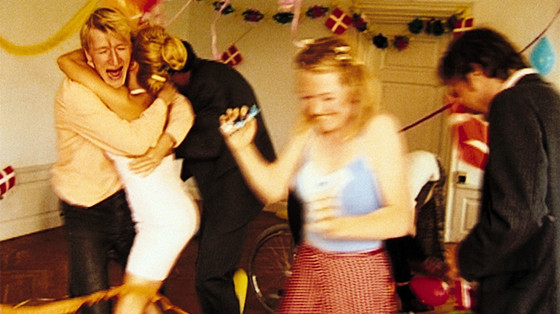
Von Trier’s first film made in complete compliant with the Dogme 95 Manifesto, The Idiots isn’t an easy viewing experience and is the kind of polarizing project that his fans admire while his detractors utterly abhor. That said, for the adventurous viewer, wonders await in this challenging, explicit, and emotionally charged comedy-drama.
The comic aspects of The Idiots cannot be under emphasized, particularly considering how many of von Trier’s vocal detractors like to typify the Dane as a humorless cynic. The Idiots tells the harrowing tale of Karen (Bodil Jørgensen), a woman who recently lost her baby and the grief of her tragedy has eluded her as something she cannot quantify or confront––at least, not yet.
Dining alone at a bustling diner Karen meets a disruptive group of people who behave as if mentally challenged. Realizing that these people aren’t what they appear to be––are they performance artists performing some kind of guerilla theater?––she joins their ranks. Staying in a communal house and led by a poised and intellective man named Stoffer (Jens Albinus), this group of people practice “spaz” behaviour in public as a means of challenging and confronting bourgeois tenets.
Most of the controversy over The Idiots is centered around the graphic sexual content––there’s an orgy scene that might be too much for the uptight viewer––but it’s really the confrontational and blunt observations on voyeurism, upsetting social mores, and the full-on denial of emotional vulnerability that should set most viewers into a tizzy.
Von Trier, with this film, brazenly calls down thunderbolts as he forces the viewer to take some accountability with our own public personas. Brutally funny and full of affection and indignation, The Idiots radiates understanding and, pardon the play on words, real penetration.
8. Dogville (2003)
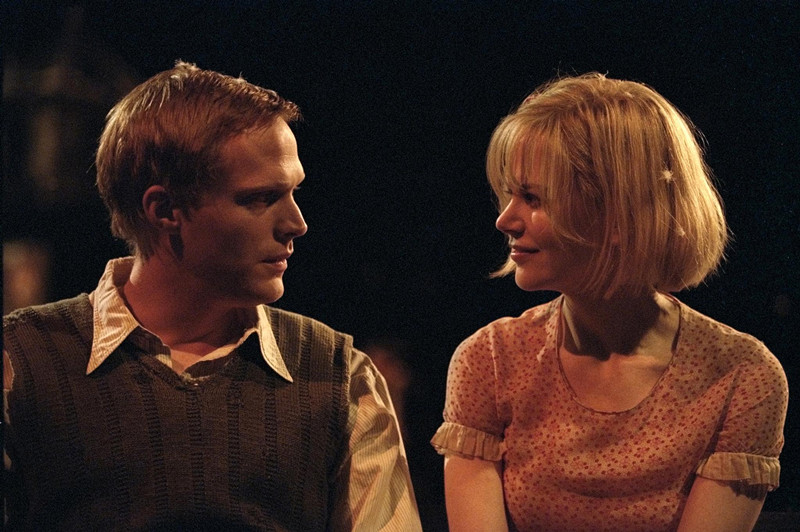
“For passion, originality, and sustained chutzpah,” wrote The Village Voice’s J. Hoberman in an overwhelmingly positive review, “this austere allegory of failed Christian charity and Old Testament payback is von Trier’s strongest movie–a masterpiece, in fact.”
A challenging experiment that stylishly utilizes a barren soundstage to manufacture the thinnest semblance of a spartan small-town mise en scène, the eponymously named Dogville and its citizens represent a succinct and cynical microcosm for America in the first picture of von Trier’s thus far unfinished USA – Land of Opportunities trilogy (with 2005’s Manderlay being the succeeding film, and as for a third film, well, don’t anyone hold their breath).
This problematic, provocative, and arguably very heroic picture concerns a mysterious fugitive woman named Grace Mulligan (Nicole Kidman) going underground, as it were, hiding from the gangsters who are after her.
The rather duplicitous people of Dogville agree to provide refuge for Grace, but in exchange for asylum she must work for various townspeople to gain patronage. As a helpless and desperate outsider Grace soon provokes some upsetting abuse and perverse derision as the film morphs into a potent morality tale and a spring-loaded parable of human suffering.
As paradoxically alienating and appealing as anything in von Trier’s oeuvre, Dogville is a risky venture that’s well served by a startling, strong, and rather savage climax. For all the film’s antithetical audience and critical reception Dogville nevertheless topped numerous 2004 top-ten lists. Rarely does a film garner such equally appalling and exuberant attention as it wrestles with such intense and dense subject matter, unless of course it comes from von Trier.